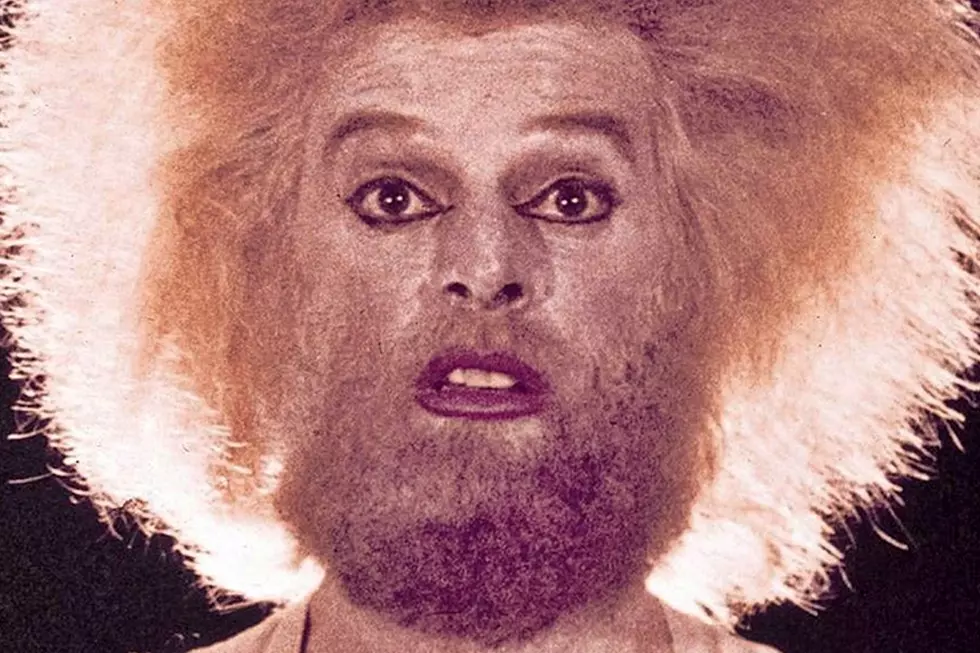
Alejandro Jodorowsky And The Art Of Transformation
Born on this day in 1929 in Tocopilla, Chile, Alejandro Jodorowsky has left his mark on this world as a filmmaker, mime, poet, writer, artist, and mystic. Best known in the comics world as the writer of the "Jodoverse," which includes The Metabarons, The Incal, and The Technopriests, Jodorowsky has dedicated his life to artistic expression in a variety of media. But no matter what form his ideas appear in, you can usually tell that they come from Jodorowsky.
When you discuss the comics of Alejandro Jodorowsky, you're really only looking at one relatively small part of his output. He's much more widely known as a filmmaker, having made some of the most bizarre, surreal, and controversial films of all time. His first feature-length film, Fando y Lis, caused a riot at its premiere in Mexico, and was subsequently banned from the country. The Western alchemical masterpiece El Topo earned him the title of "father of the Midnight Movie," and that movie and his follow-up, The Holy Mountain, achieved more than a cult status. Their unavailability for thirty years allowed the strange and confrontational films to transcend into legend.
But we're here to talk about comics, and "Jodo" made his first foray into the art form in Mexico, with his output designed to espouse the ethos of the "Panic Movement" he helped found. He wrote the subversive Anibal 5 for artist Manuel Moro, and illustrated a surrealistic weekly newspaper strip called Fabulas Panics ("Panic Fables") that could genuinely be described as decades ahead of its time. With simple figures, looping narratives, and psychedelic designs, it seems more like a strip that would come out of the 1980s art comic boom than 1960s Mexico. (A large collection of strips is available at fabulaspanicas.blogspot, and they're miraculous.)
In the late '70s, he entered the French comics marketplace on his first collaboration with Jean Giraud, Les Yeux du Chat ("The Eyes of the Cat"). His next project with Giraud, aka Moebius, was in Metal Hurlant; "John Difool" laid the foundation for the shared universe in which most of Jodorowsky's stories take place and acted as a sort of blueprint for the types of comics he would become known for.
Published in America as The Incal, the book mixes action, satire, and metaphysics in an exquisite sci-fi package that introduces the themes Jodorowsky would return to throughout his career. With characters based on the major arcana of the Tarot, The Incal explores revolt against religious oppression, the power of the individual and the ethereal in a technocratic society, and the attainment of the essential self.
He returned to The Incal on the prequel Before the Incal with artist Zoran Janjetov, and what was intended to be the conclusion of the series, After the Incal with Moebius. When Moebius was unable/unwilling to complete that story --- and passed away not long thereafter --- Jodrowsky rewrote it as Final Incal for the artist Jose Ladronn. Taken altogether, The Incal cycle is like a recursive loop that repeats, refutes, and repeats again John Difool's unlikely and unwanted journey toward an enlightenment that is at once spiritual, practical, sexual, and comical.
In The Metabarons, Jodorowsky views some of the same themes in The Incal through a dark mirror. Illustrated by Juan Gimenez, The Metabarons is a monumental science fiction fable that details the family dynasty of The Metabaron, the bounty hunter introduced in The Incal. Utilizing many ideas from an aborted Dune film adaptation (documented in the excellent documentary Jodorowsky's Dune), the space opera/epic generational drama explores a line of warriors chasing individualism and self-perfection through savagery and tribalism.
In the tradition of the Castakas, each father initiates his son into the warrior caste with an act of ritual mutilation. In order for each son to assume his rightful role as leader of the tribe, he must kill his own father in single combat. Like a dark fairy tale, The Metabarons is a brutally violent and bizarre saga about healing, men's acceptance of their female side (articulated through androgynous themes that increase throughout the story), and yes, even love.
In many of his stories, including The Technopriests with Zoran Janetov (also set in the "Jodoverse") and The White Llama with Georges Bess, Jodorowsky's characters undergo transformations, sometimes physical, sometimes spiritual, often both. They transcend forms, mentalities, and dogmas; they grow.
Through most of Jodorowsky's stories one can find echoes of his philosophy of "Psychomagic" --- a shamanic approach to therapy that attempts to heal psychological torment through the ritual of art --- even in sci-fi westerns and sex comedies. And somehow, he does this with stories that are satisfying as artifacts of pop weirdness that defy and confront, shock and entertain.
His mix of humor, action, parody, mysticism, science fiction, fable, male/female relationships, self/other relationships, and even a mocking self-awareness make for some of the most fascinating stories completely outside the typical American comics paradigm.
For the uninitiated, Jodorowsky's books at first seem like strange transmissions from another world, with completely different values than our own. After being immersed in that world, one might begin to think that Jodo's values are the only ones that truly matter. And that might be the act of transformation he intended all along.
More From ComicsAlliance









